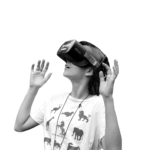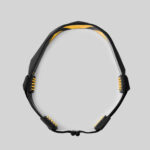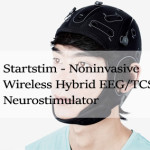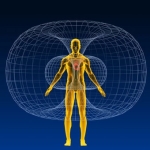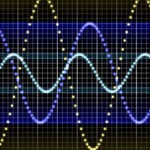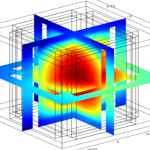I would like to tell you a story today that started 40 some years ago.
When my siblings and I were little, our mom would have us play a fun game … well, I remember this happening around 1975. The game was … telepathy and you have probably played it, too. We would all sit in a circle for a while and in turns try to transmit each other words, images or other thoughts. Could we communicate this way with each other? Concentrate hard and …
Needless to say, we didn’t really make much progress during those early experiments, but the game was productive because it was thought provoking. How could we make this work? It seemed natural enough! Imagine what we could do if we could share thoughts, emotions, sensations… It would be awesome! How would we use this gift? What would you do?
As it turns out, I’ve had the privilege of leading a team of researchers from around the world that recently demonstrated for the first time that it is possible to establish direct, conscious brain-to-brain communication using technology, no paranormal powers involved. But before telling you how we did it let me provide some context. I am a vocational physicist, since I was a kid and in my humility I’ve wanted to understand the universe. I believe our bodies and minds and the subjective experiences they create are really grounded on observable, solid physical laws – nothing else – and that brains and even minds can be studied using science.
The physical brain interacts with body and then the external world through our senses, computing, exchanging information. Picturing, modeling, imagining what is out there. How does the brain do it?
If we figure out the basics, interacting directly with the brain – with the mind – will become an engineering problem. Hard – certainly – but also doable sooner or later.
So, how would we send a thought from a brain to another, what does that mean? We need to achieve 3 things. The first one is to extract the information from the brain of the sender, you have to capture the thought that is to be sent. Once you do that, you need to transmit the message over some medium. This is easy, everything is digital and the internet for instance can be used (or smoke signals, it doesn’t matter). The last step is especially challenging. You have to insert the information into a second brain. You have to create a thought in the recipient without her relying on the senses. The brain is an electrical organ. Electricity and more generally electromagnetism, the family of physical phenomena governed by Maxwell’s equations, mediates the transmission and processing of information in the nervous system. Neurons and many other cells shareinformation electrically as well as chemically, and the varying spatio-temporal patterns of activity they generate can be associated to specific cognitive activities, although we are not able yet to decipher all their meaning yet. This is an important problem, because it seems that whatever the mind is, it is very closely associated to this electrochemical choreography. EEG, or electroencephalography, is a hundred-year old technique that consists in measuring the tiny electrical fields generated by the brain while it goes about its business – from the scalp, non-invasively. Modern EEG is quite sophisticated, thanks to much improved electronics, novel mathematical algorithms and tremendous computational power. And it is in constant evolution.
Using EEG and other neuroimaging methods now available we are able to study brain function and discern among a discrete set of brain states associated to mental imagery. In other words, we are beginning to crack the neural code. And we can, even if very crudely, literally read minds. So, going back to our game, it seems that we have at least one of the elements we need to enable brain-to-brain communication without magic. We can create a direct forward link between brains and computers using EEG. What about the other direction, computer to brain communication? Well, if the brain is an electrical system, we can surely act on it using electricity. Indeed, there are now medical devices that do just this. My team and I are mostly focusing on a non-invasive approach called Transcranial Current Stimulation.
Technically it is sort of the inverse of EEG. Currents are injected from the outside, and these currents create tiny electrical fields inside the brain that interact with neurons, altering their activity and the activity of the entire brain in subtle ways. The roots of brain stimulation are very old, going back at least to the Egyptians, Greeks and Romans (such as the roman doctor Scribonious Largus, who used torpedo fish), who experimented with electric fish and brains to treat pain. (Do no try this at home!) Another related non-invasive technique is called TMS, which generates localized electric fields strong enough to make neurons in the brain fire.Let’s to back to our game. As I’ve explained, using EEG we can already extract information from neural activity associated to mental imagery. We can also use brain stimulation to “inject” information in brains. But can we actually create artificial percepts by non-invasively manipulating electric fields in the brain? Well, it turns out that yes, we can! We can use stimulation to create several types of percepts, including visual and tactile sensations. The technology is advancing quickly, supported by robotics and navigation technologies that allow us to hit the right areas of the brain in a robust and repeatable manner. Using these tools, my colleagues and I recently carried out an experiment to prove that it is possible to transmit information from one brain to the other consciously, without any intervention of anything other than our brains and technology – entirely bypassing our peripheral systems, our senses, our muscles.
By now you know how we did it: we used EEG to decode simple thoughts from a person called the “emitter” – a Starlab researcher located in India – and we applied non-invasive stimulation to create percepts in a receiver in Strasbourg. We used TMS, a non-invasive stimulation technique that generates localized electric fields strong enough to make neurons in the brain fire. Applied in the right place and orientation, we could make the receiver perceive flashes of light on demand without intervention of the eyes. There is no light, only the sensation of light. The emitter was given a list of symbols, 1s or 0s, and instructed to think “I am moving my hands” or “I am moving my feet” to encode the 1 or a 0. An EEG system decoded this from the data, “reading the emitter’s brain”, and then sent out emails to another computer which, depending on the received value, guided a stimulation system to stimulate the receiver in one of two different ways, making him perceive or not a flash of light – again to encode a 1 or a 0. Hidden in this binary symbol stream were the words “hola” and “ciao”, much in the same way that computers represent letters in binary form, in 1s and 0s. For all this to work, though, the symbols had to be encoded and decoded correctly. We made every effort to ensure that the transmission was in no way mediated by senses, cues from sounds and such, because our goal was to demonstrate that the transmission was “direct” brain to brain.
And, we succeeded; the list of symbols was transmitted with little error, the two words received faithfully. “Hola” and “Ciao”. Not precisely deep conversation. But a start in the brain-to-brain communication business. This was the first time in human history that two people shared a conscious thought in such a direct way, purely brain to brain. The shared thought was very simple, but in a sense the message contained the essence of any type of information exchange: a yes or a no. A 1 or a 0. So what, you will ask? Can we share anything beyond a boring list of ones and zeros? Well, in all honesty no, not yet today. The next challenge is the synthesis of more sophisticated percepts using brain stimulation. Tactile sensations, sounds, visual imagery will follow. Further down the line we may be able to share abstract concepts, mathematics, emotions. We will use technologies that allow us to read and stimulate the brain in a global manner, because the brain is a distributed networked processor. This will come; it is just a matter of time. And it will change civilization in ways that will make the invention of the internet seem truly quaint. We may imagine we will use these new powers to compute, to think and solve problems together more fluently, to gain extra senses. We will probably need neural translators, to account for the different ways individual brains work. It will be very interesting very challenging. Will we get along better as a species once we establish such broadband communication channels? Will we use them to communicate with other species? With intelligent artificial systems? Or will we use these powers for evil purposes? There are many implications, many possibilities. Many questions.But just as important, the same advances that are to allow such direct, content-rich communication will have empowered us to finely read and manipulate the electrical fields in the brain and treat diseases such as epilepsy or depression. So brain-to-brain communication poses challenges of value to clinical applications. At my company we are already working in this direction with researchers worldwide.
As you can see, playing games may have consequences other than expected.
Indeed, the beginning of science is really curiosity and fun, which kids excel at.
And, as history has shown us many times, the fallout from human curiosity can be tremendous..
If you start with a powerful vision, who knows where you will land? “Everything you can imagine is real”.
Thank you!

